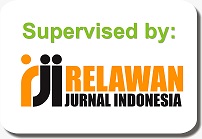GAMBAR BERCERITA RAMAH BERKATA Representasi Keteladanan dalam Gambar Bercerita di Dongeng Anak Corona Series
Abstract
Fairy tale is one of the communication media to convey messages through stories so that they are easily understood by children. This research discusses the Dongeng Corona Series 2 by "Clean and Healthy Lifestyle Habits" which the duration of this video is 7 minutes 25 seconds can be accessed at YouTube channel in https://www.youtube.com/watch?v=kuxhgFw8648. This study aims to discuss the meaning of exemplary and messages contained in the Dongeng Corona Series 2, where this fairy tale was created as a form of concern for the Central Java Human Initiative and Kak Kempho's Picture Story Studio in fighting Covid 19 by providing education to children through fairy tales. This research method uses semiotic analysis for picture messages and in-depth interviews with Kak Kempho to explore further data through zoom meetings. The research findings show that the role of the storyteller as a communicator as a determining factor for messages conveyed in fairy tales will be well received by communican. Some of these defining conditions are that the storyteller knowledge and the storyteller has a way to tell about a theme more easily for both children and parents to understand. Fairy tales also help people to explain those that are difficult to explain. The hope is that fairy tales can help people carry out a mental revolution from an early age.
Keywords
Full Text:
PDF (Bahasa Indonesia)References
Desmita. (2006). Psikologi Perkembangan (2nd ed.). Remaja Rosdakarya. https://rosda.co.id/pendidikan-keguruan/410-psikologi-perkembangan-desmita.html
Fiske, John (1990), Cultural dan Communication Studies : Sebuah Pengantar yang Paling Komprehensif, Yogyakarta : JalaSutra
Moleong, Lexy J. (2012). Metode Penelitian Kualitatif, Bandung, Remaja Rosdakarya
Sobur, A. (2009). Analisis Teks Media: Suatu Pengantar untuk Analisis Wacana, Analisis Semiotik dan Analisis Framing. Bandung: Remaja Rosdakarya.
Tabrani, Primadi. 2012. Bahasa Rupa. Bandung: Penerbit Kelir.
Breton, G. (2011). Semiotic Analysis of Storytelling in the Annual Report. SSRN Electronic Journal. https://doi.org/10.2139/ssrn.1346041
Hayati, S. S. (2017). Dongeng Sebagai Media Belajar Untuk Meningkatkan. Prosiding Seminar Nasional Tahunan Fakultas Ilmu Sosial Universitas Negeri Medan Tahun 2017, 196–199. http://semnasfis.unimed.ac.id/
Neina, Q. A. (2019). Dongeng Abad 21: Modernisasi Sastra Anak Berbasis Psikologi Perkembangan. Jurnal Sastra Indonesia, 7(3), 202–211. https://doi.org/10.15294/jsi.v7i3.29846
Rakhmawati, A. (2013). Tokoh Kucing Dalam Dongeng Prancis Le Chat Botté Dan Dongeng Indonesia Si Penjual Kucing : Kajian Semiotika. Jurnal Ilmiah Mahasiswa FIB, 2(1).
Ranti Maretna, H., Hayati, Y., & Ismail, M. (n.d.). Analisis Semiotika Riffaterre Dalam Puisi Dongeng Marsinah Karya Sapardi Djoko Damono. Retrieved April 11, 2020, from http://103.216.87.80/index.php/ibs/article/view/9875
Rukiyah, R. (2018). Dongeng, Mendongeng, dan Manfaatnya. Anuva, 2(1), 99. https://doi.org/10.14710/anuva.2.1.99-106
Setiati, Luna, Priyanto Sunarto & Pindi Setiawan, (2013), Komunikasi Gambar Bercerita pada Buku Belajar Baca Anak Taman Kanak-Kanak, ITB J. Vis. Art & Des, Published by LPPM ITB, ISSN: 1978-3078, DOI: 10.5614/itbj.vad.2013.5.1.3, http://journals.itb.ac.id/index.php/jvad/article/download/631/352
Inibaru.id. (2018). Kak Kempo Juru Dongeng Gambar Asal Semarang. https://www.inibaru.id/inspirasi-indonesia/kak-kempo-juru-dongeng-gambar-asal-semarang
DOI: https://doi.org/10.32528/mdk.v4i2.5861
Copyright (c) 2021 MEDIAKOM

This work is licensed under a Creative Commons Attribution-NonCommercial-ShareAlike 4.0 International License.








